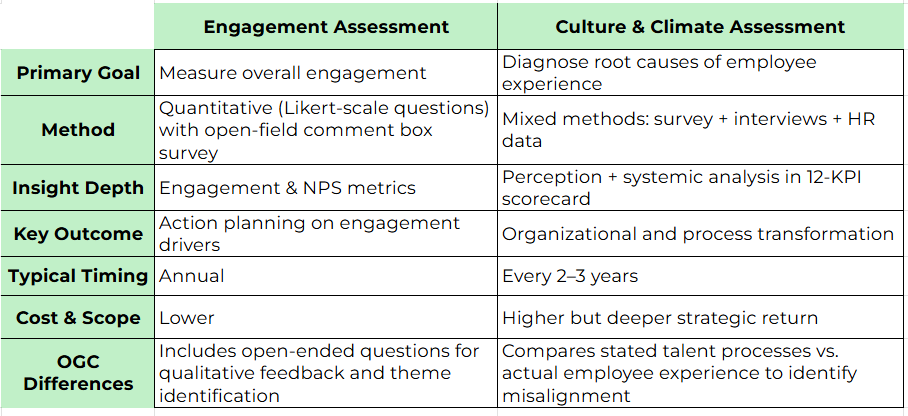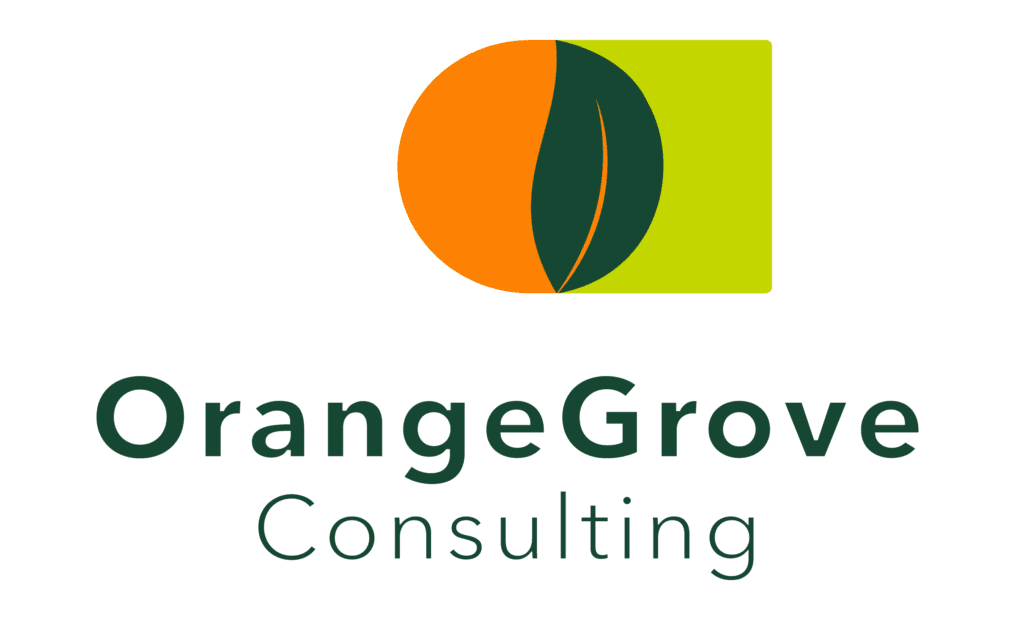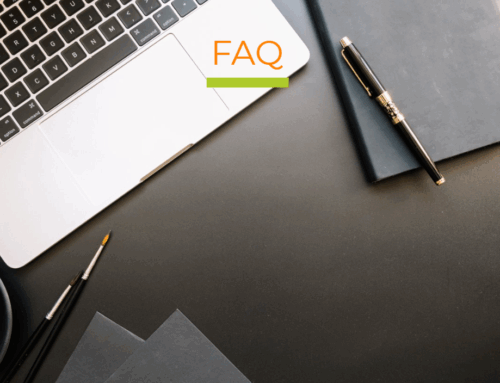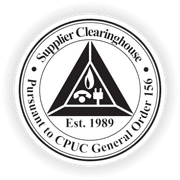If you’re relying on a yearly engagement survey to understand your workplace culture, you’re not alone – but you may be missing what really matters.
Many HR and operational leaders use engagement surveys as their default diagnostic tool. They’re easy to implement, offer clean metrics, and come with trendable year-over-year data. But here’s the challenge: these surveys are designed to measure how engaged employees feel, not why they feel that way – and certainly not whether your systems and processes are driving or hindering equitable outcomes. In addition, some leaders may disregard engagement results as subjective perceptions unless validated with HR data and system-level insights.
Before defaulting to the same old engagement survey, consider whether it will uncover the insights you truly need. The right tool depends on the questions you’re asking – and in many cases, an engagement survey alone may not go far enough.
Engagement vs. Culture Assessment: A False Either/Or?
Engagement surveys have value, especially when you need quick feedback or a baseline on morale. Orange Grove Consulting (OGC) has developed a proprietary engagement survey based on the 3 subtypes of employee engagement, using research-validated questions, and our engagement assessment provides actionable feedback for leaders. Actions = improvements.
And, if you are looking for something more rigorous because your goal is organizational improvement, a culture and climate assessment will uncover the root causes of employee experience.
At Orange Grove Consulting, we help organizations move beyond surface-level insights. Our engagement, culture and climate assessments go deeper – using mixed methods to uncover blind spots in your systems, perception gaps between employee groups, and barriers to engagement that aren’t visible in quantitative surveys alone.
Here’s a quick comparison of OGC’s Engagement Assessment and Culture & Climate Assessment:

The 12 KPIs We Measure – A Broader Look at Organizational Health
Our proprietary culture assessment framework is organized into three domains that together offer a comprehensive picture of your organization’s workplace environment: Organizational Processes, Organizational Landscape, and the Supporting Environment.
Organizational Processes focuses on how work gets done – including how talent is managed, how decisions are made, and whether policies are consistently applied across teams and functions. This area highlights whether the systems you have in place are being executed as intended, or if inconsistencies are undermining trust and fairness – which affects employees commitment levels.
Organizational Landscape captures the broader perception of equity and inclusion within your organization. This domain assesses how employees experience fairness, whether they see people like themselves represented at all levels, and how inclusive the day-to-day culture feels. It uncovers perception gaps across demographic lines and reveals how well your values around are reflected in practice.
The Supporting Environment measures the intangible cultural elements that influence how employees show up and engage. This includes the level of psychological safety employees feel, the degree to which communication is open and transparent, and whether there is trust in leadership. It also looks at access to opportunity and the alignment employees feel between their work and the organization’s mission – all of which are critical for long-term engagement and retention.
Together, these 12 KPIs don’t just assess sentiment – they help explain why your organization is performing the way it is, and where targeted interventions can lead to measurable, sustainable change.
Case in Point: Transparency that Transformed
One of our clients, a mid-sized professional services firm, believed their stock ownership program was fair. However, employees across one demographic consistently felt the selection process was biased.
A traditional engagement survey wouldn’t have uncovered the issue. But our culture assessment – combining employee feedback, HR data, and leadership interviews – revealed that employees’ perception was reality. One group was invited to the program over a year earlier than others, despite similar performance.
As a result of our recommendations, the company introduced transparent criteria, an application process, and meaningful feedback – removing bias and improving trust.
Read the full case study here.
Time to Reconsider What You Really Need
Engagement surveys are often seen as the default tool – but default doesn’t mean ideal. If you’re facing recurring culture issues, inconsistent perceptions of fairness and opportunity, or unexplained attrition, a broader diagnostic may be the missing piece.
Let’s explore together which tool makes the most sense for your organization.
Schedule a call to walk through your goals and determine what solution will get you closer to the outcomes you want and will support your larger organizational goals.
Contact Us





